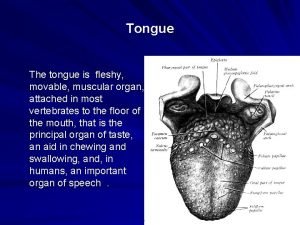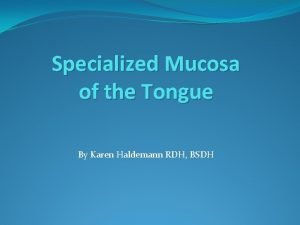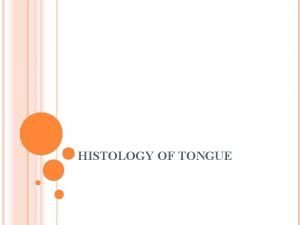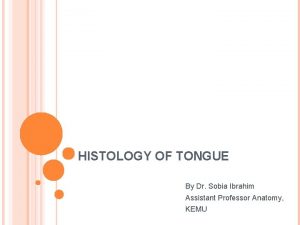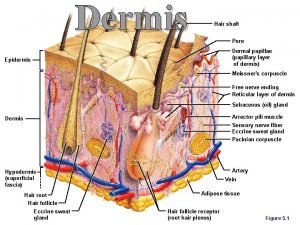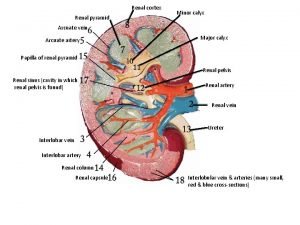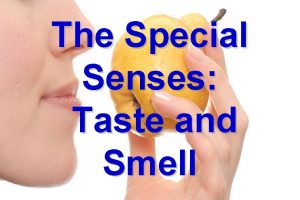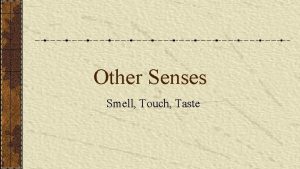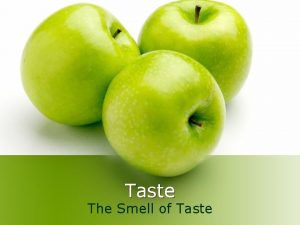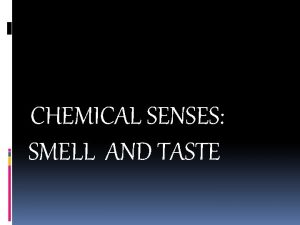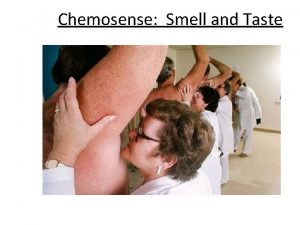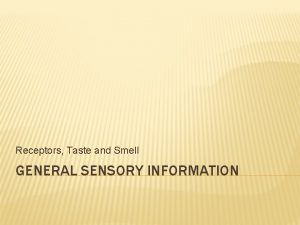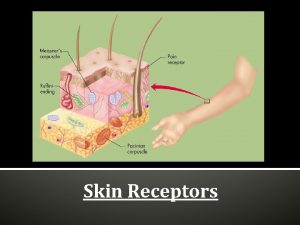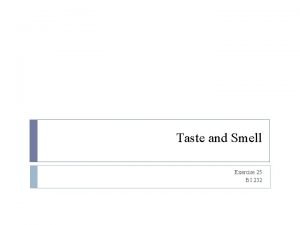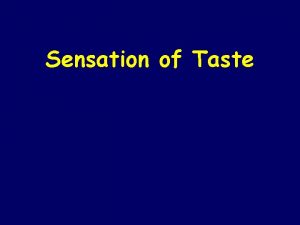Taste and Smell Taste receptors Papillae These are















- Slides: 15

Taste and Smell

Taste receptors- Papillae • These are the locations where threshold sensitivity is greatest. Every taste bud has equal "detection" of each taste

Sweet • Foods rich in simple carbohydrates, such as sugar, sweetened chocolate, cakes (most dessert foods), and some common berries (blueberries, strawberries, and cherries). • Evolutionary standpoint- sweet foods were sought by our ancestors due to their energydense qualities. • Highest taste recognition threshold

Salty • Sense of taste due to the detection of alkali metal ions (primarily the Sodium ion, which every other salty flavor is based off of). • Evolutionary standpoint: salty foods contained the sodium essential to physiological processes. • Examples: table salt, capers, fast food, potato chips, and foods that are high in Sodium.

Sour • Sense of taste that detects acidity. • Examples: naturally sour fruits (lemons, oranges, grapes), wine, sour candy (Lemon Drops, Warheads).

Bitter • The most sensitive of the tastes. • Examples: coffee, unsweetened cocoa, olives, citrus peel, marmalade, beer. • Evolutionary standpoint: We tend to avoid bitter foods, as many natural bitter compounds are known to be toxic.

Umami • Japanese term for "meatiness". Sense of taste associated with detecting savoriness in food. • -Discovered in 1908. • MSG is strongest source of umami flavor. • Examples: cheese, soy sauce, tomatoes, shittake mushrooms, beans, fish, and meat. • Evolutionary standpoint: "meaty" foods contained proteins that aided in tissue growth and reparation.

Taste • - Papillae contain taste buds that transmit the sensation of taste. • - Stimulation produces saliva. • - Electrical impulse created by taste bud's gustatory receptor cells. • - Impulse travels down nerves under tongue to the brain, where it is analyzed and results in the perception of taste

What factors affect taste? 1)Mood • - Brain initiates taste • - Anxious, Depressed: "cardboard" taste • - Stressed: Sugar and carb based food boosts our level of serotonin 2) Aging • - Taste buds wear out • - Disappear from sides and roof of mouth • - Remaining taste buds become less sensitive • - Ability to smell decreases

Tasting with Somatosensory System • Coolness- activates cold receptors even if food is not cold • - "fresh" or "minty" sensation • - Examples: spearmint, menthol, ethanol • Dryness- foods that have astringent (rough) sensation • - most unripe fruits have this taste • - Examples: unripe bananas, tea, red wine, and rhubarb

• Hotness- activates heat receptors even if food is not hot • - Sensation known as chemesthesis (chemical sensibility) which is a multi-sensory perception • - Primarily elicited through the inclusion of spice to food • - Examples: chili and black pepper, ginger, horseradish

Smell



Pheromones • http: //www. smithsonianmag. com/sciencenature/the-truth-about-pheromones 100363955/? no-ist
 Antigentest åre
Antigentest åre The tongue is a muscular organ
The tongue is a muscular organ The chemical senses taste and smell review worksheet
The chemical senses taste and smell review worksheet Beach side sight
Beach side sight Flow chart of taste and smell
Flow chart of taste and smell Umami taste receptors on tongue
Umami taste receptors on tongue Development of tongue
Development of tongue Where are foliate papillae located
Where are foliate papillae located Dorsal surface of tongue histology
Dorsal surface of tongue histology Largest papillae on tongue
Largest papillae on tongue Vallate papillae
Vallate papillae Papillae of skin
Papillae of skin Lamina propria of tongue
Lamina propria of tongue Histologi lidah
Histologi lidah Gll labiales
Gll labiales Arcuate vein
Arcuate vein

